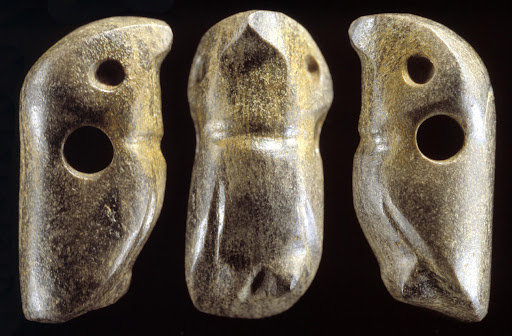Discover the Past in your Backyard
In the heart of the southeastern United States lies a land steeped in history, where the echoes of ancient cultures resonate through time. Mississippi often hailed as the Magnolia State, not only boasts breathtaking natural beauty but also serves as a treasure trove of archaeological wonders. Among its many treasures, Mississippi stands out as one of the best sites to find evidence of Paleo-Indian life, offering a window into the earliest chapters of human existence in North America.
Sites specifically hosting the Paleo-Indian period are few. The best example, however, is your very own backyard. Backyards often remain relatively undisturbed over time, especially if they haven’t undergone significant landscaping or construction. This allows any artifacts or features of the Paleo- Indian period to remain well preserved under the surface.
The Landscape

Backyards are part of local landscapes that could have been attractive locations for Paleo-Indian settlements due to factors such as the proximity to water sources, game trails, and strategic viewpoints. Mississippi boasts nearly “119 public lakes, 123,000 stream miles, and 225,000 freshwater acres“. The state is also home to the whitetail deer, with an estimated population of 1.5 million as of October 2023. This abundance of water sources and game makes Mississippi the perfect place to follow wild game trails. Even a small backyard could hold important clues about ancient human habitation patterns in the area.
The Influence of Lifestyle
Due to the nomadic lifestyle of Paleo-Indians, evidence of their use can be found right in your very own backyard. Unlike larger archaeological sites that may require permits or permissions for excavation, a backyard is privately owned and accessible to the homeowner. This means that if artifacts are discovered, they can be easily studied and documented, potentially leading to significant contributions to archaeological knowledge. Items can then be submitted to the Museum of Natural Science located in Jackson, Mississippi, for further documentation and studies.
Next time you plant your summer garden or walk through your yard after a rain shower, keep an eye out for the history in your backyard. While it may seem surprising, someone’s backyard has the potential to be an excellent example of a Paleo-Indian site due to its natural preservation, local context, accessibility, community involvement, and the potential for surprise discoveries.
As we delve into the depths of Mississippi’s past, we discover a tapestry of human resilience, ingenuity, and adaptation. From the Paleo-Indians roaming the land thousands of years ago to the vibrant cultures that followed, the Magnolia State holds a special place in the annals of American archaeology. By exploring its landscapes and uncovering the traces of ancient civilizations, we not only enrich our understanding of the past but also reaffirm our connection to the land and its enduring legacy.
In the next article, we will explore our backyards together and learn how to locate, date, and preserve the history in your backyard.
Citations:
“Mississippi Department of Wildlife, Fisheries, and Parks. “Deer Program.” Mississippi Department of Wildlife, Fisheries, and Parks, www.mdwfp.com/wildlifehunting/deerprogram/#:~:text=Mississippi’s%20deer%20population%20is%20estimated,harvesting%20approximately%20280%2C000%20deer%20annually.”
“Mississippi Department of Wildlife, Fisheries, and Parks. “Public Waters Program.” Mississippi Department of Wildlife, Fisheries, and Parks, www.mdwfp.com/fishing-boating/publicwatersprogram/#:~:text=Mississippi%20is%20fortunate%20to%20have,go%20fishing%20is%20not%20hard.”
Photos courtesy of Adobe Stock



















